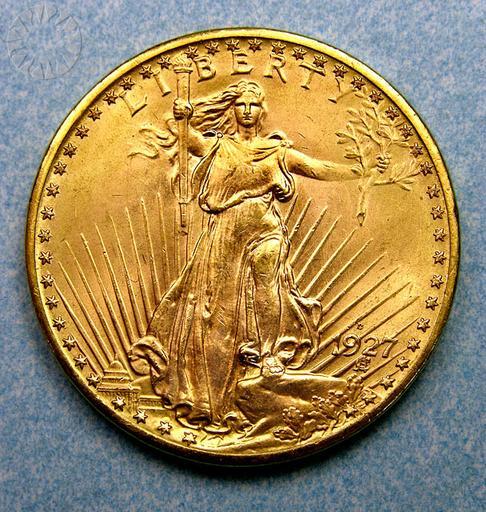MAKE A MEME
View Large Image

| View Original: | United_States,_20_Dollars,_1927.jpg (608x640) | |||
| Download: | Original | Medium | Small | Thumb |
| Courtesy of: | www.flickr.com | More Like This | ||
| Keywords: legendary coins legendarycoins numismatics money smithsonian probably public domain probablypublicdomain round circle ancient indoor SI Neg. 2005-27332. Date: 9/1/2005...Numismatic legends can be contrived, or they can be accidental-objects that never started as legends but became legendary due to unforeseen circumstances. Perhaps all but a few members of a given mintage were destroyed, or hoarded in unsettled times and never recovered. Under these circumstances, legendary status will be acquired years after the actual creation of the object. .America's numismatic story embraces a number of accidental legends, but none, perhaps, is more fascinating than a double eagle, struck in Denver in 1927. When the 1927 Denver twenty-dollar gold piece was minted, there was absolutely nothing exceptional about the coin, or the circumstances of its creation. .The United States was firmly on the gold standard. Gold was still being mined in Alaska and the West, and the United States branch mints at Denver and San Francisco were expected to turn the yellow metal into gold coins, which they did. That year saw Denver producing 180,000 double eagles-a decline from the figure for previous years, but a perfectly acceptable mintage. .If matters had remained as they were when the coins were struck, they never would have become legendary. But matters did not remain the same. An economic downturn at the end of the 1920s turned into an economic collapse by the beginning of the 1930s; and a new President, Franklin Delano Roosevelt, decided to take the country off the gold standard as one more way of combating the Depression. .Under the circumstances, most gold coins were called in and melted. Provisions were made for exempting collectibles, but few people thought of the recent gold issues as collectibles. So virtually all were turned in, the 1927 Denver double eagles along with the rest. And a once reasonably common twenty-dollar coin from Denver acquired legendary status. At present, this is one of fewer than a dozen that are known..Click here to view the obverse...Credit: Tom Mulvaney (Smithsonian Institution) SI Neg. 2005-27332. Date: 9/1/2005...Numismatic legends can be contrived, or they can be accidental-objects that never started as legends but became legendary due to unforeseen circumstances. Perhaps all but a few members of a given mintage were destroyed, or hoarded in unsettled times and never recovered. Under these circumstances, legendary status will be acquired years after the actual creation of the object. .America's numismatic story embraces a number of accidental legends, but none, perhaps, is more fascinating than a double eagle, struck in Denver in 1927. When the 1927 Denver twenty-dollar gold piece was minted, there was absolutely nothing exceptional about the coin, or the circumstances of its creation. .The United States was firmly on the gold standard. Gold was still being mined in Alaska and the West, and the United States branch mints at Denver and San Francisco were expected to turn the yellow metal into gold coins, which they did. That year saw Denver producing 180,000 double eagles-a decline from the figure for previous years, but a perfectly acceptable mintage. .If matters had remained as they were when the coins were struck, they never would have become legendary. But matters did not remain the same. An economic downturn at the end of the 1920s turned into an economic collapse by the beginning of the 1930s; and a new President, Franklin Delano Roosevelt, decided to take the country off the gold standard as one more way of combating the Depression. .Under the circumstances, most gold coins were called in and melted. Provisions were made for exempting collectibles, but few people thought of the recent gold issues as collectibles. So virtually all were turned in, the 1927 Denver double eagles along with the rest. And a once reasonably common twenty-dollar coin from Denver acquired legendary status. At present, this is one of fewer than a dozen that are known..Click here to view the obverse...Credit: Tom Mulvaney (Smithsonian Institution) | ||||